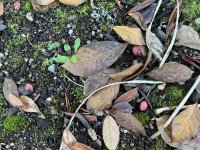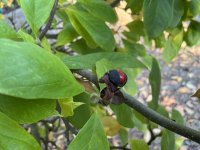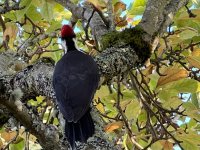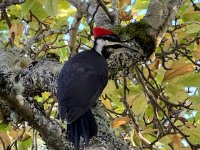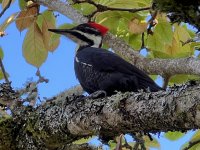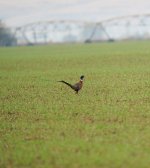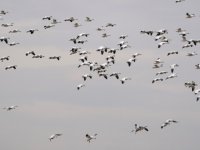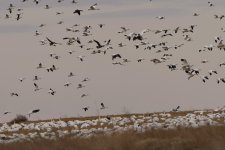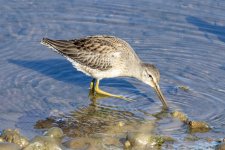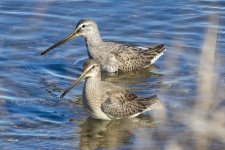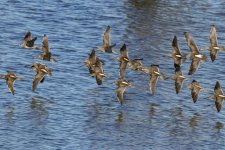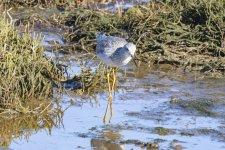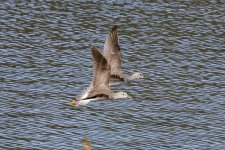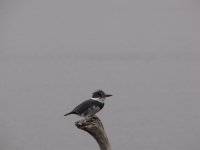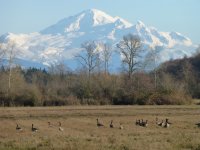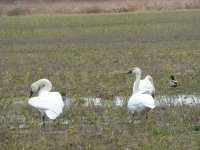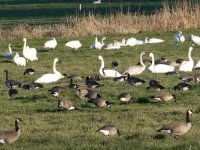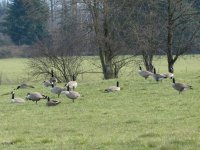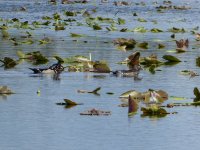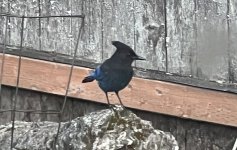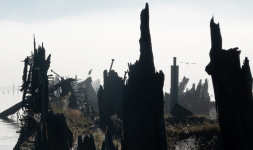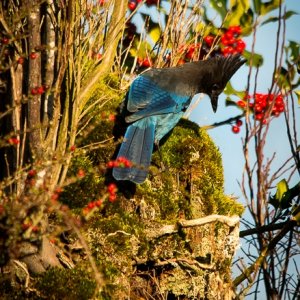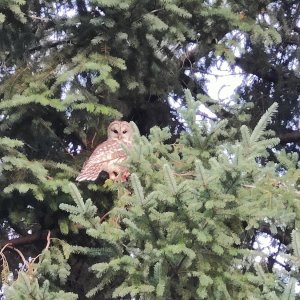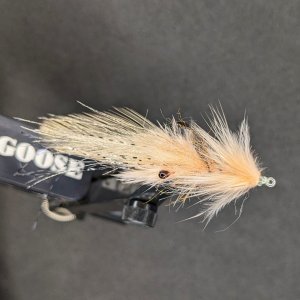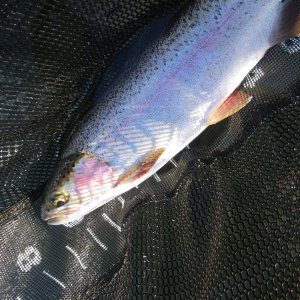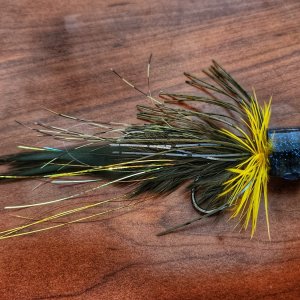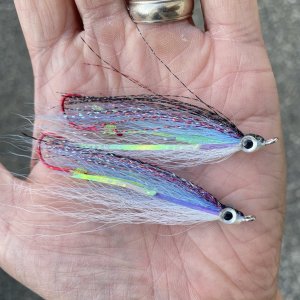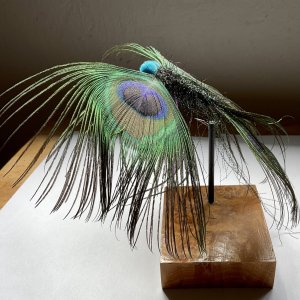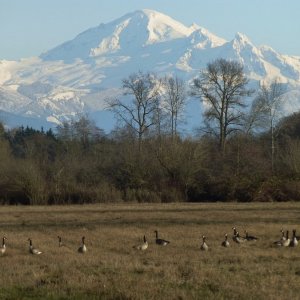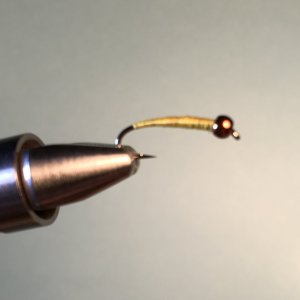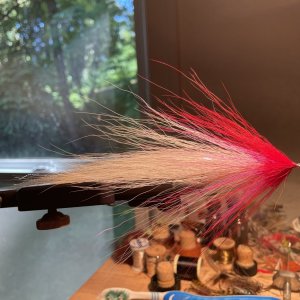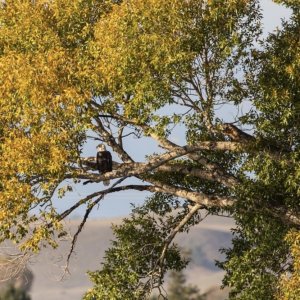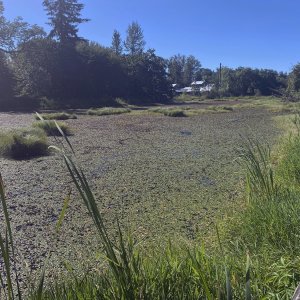You are using an out of date browser. It may not display this or other websites correctly.
You should upgrade or use an alternative browser.
You should upgrade or use an alternative browser.
Got any bird pics?
- Thread starter Wadin' Boot
- Start date
Cabezon:
Gotta love the Delta. I went there almost once a week for many years in the early 70's.
Always enjoy your contributions!
Gotta love the Delta. I went there almost once a week for many years in the early 70's.
Always enjoy your contributions!
Stonedfish:
Great pics of that pretty female.
Great pics of that pretty female.
tkww
Steelhead
They do seem to have a weird aversion to human presence sometimes. Thanks for sharing the pics.This gal was going crazy yesterday after seed pods in my Magnolia tree. She didn’t really seem to care how close I was.
SF
This gal was going crazy yesterday after seed pods in my Magnolia tree. She didn’t really seem to care how close I was.
SF
I think it’s so cool you have them in your neighborhood. I have to head into the woods to see them and if I do - it’s usually only a glimpse.They do seem to have a weird aversion to human presence sometimes. Thanks for sharing the pics.
That Is dope as f*ck as the kids would say.This gal was going crazy yesterday after seed pods in my Magnolia tree. She didn’t really seem to care how close I was.
SF
View attachment 87751View attachment 87752View attachment 87753View attachment 87754View attachment 87755
Those snows are chatty birds.
Nice pics, all of you.
Nice pics, all of you.
Jim -A few Canadas flying with this group. Sure wish I could have gotten closer.
View attachment 87913View attachment 87914
I was bobbing around Potholes in my float tube today; vast numbers of snow geese flying overhead, countless.
Awesome birds! We have tall conifers in our backyard. One year, a pileated swept in to visit a tree that was in severe decline. The sound of the flight in, along with the talons grabbing the bark was startling. You could just sense its heft! Mini pterodactyl!This gal was going crazy yesterday after seed pods in my Magnolia tree. She didn’t really seem to care how close I was.
SF
View attachment 87751View attachment 87752View attachment 87753View attachment 87754View attachment 87755
Then the work began, how they get that head working like a jackhammer is simply amazing! Bark exploding, coming down in clouds. Must be a lot of twitch muscle at work there!
Nisqually Wildlife Refuge is the winter home for several hundred cackling geese. These smaller clones of Canada geese (a bit larger than a mallard) often form one massive flock.
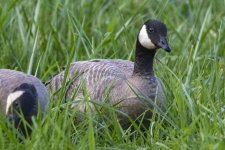
They form much tighter, much more numerous flocks on the ground than do their larger Canada cousins. There are always a few birds with their heads up as sentinels, while other birds nip the new grass growth. In late September, my wife and I watched the staff at the refuge use a large tractor to mow the seasonally-flooded meadows. Mowing stimulates new grass growth that will feed the arriving waterfowl.
A passing eagle can trigger the whole flock to burst into noisy flight, with smaller groups splintering off the main flock.
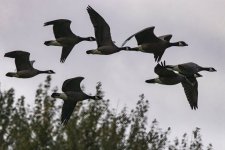
After the eagle passes, these small groups begin to land and resume feeding. During landing, birds typically face into the breeze and drop relatively vertically to squeeze in among birds that have already landed.
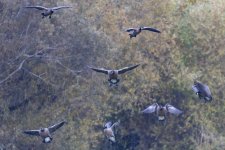
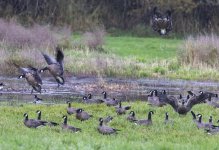
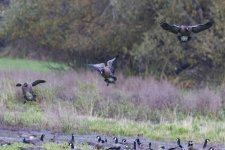
Steve

They form much tighter, much more numerous flocks on the ground than do their larger Canada cousins. There are always a few birds with their heads up as sentinels, while other birds nip the new grass growth. In late September, my wife and I watched the staff at the refuge use a large tractor to mow the seasonally-flooded meadows. Mowing stimulates new grass growth that will feed the arriving waterfowl.
A passing eagle can trigger the whole flock to burst into noisy flight, with smaller groups splintering off the main flock.

After the eagle passes, these small groups begin to land and resume feeding. During landing, birds typically face into the breeze and drop relatively vertically to squeeze in among birds that have already landed.



Steve
I thoroughly enjoy these posts. Thank you for taking the time to make them.Nisqually Wildlife Refuge is the winter home for several hundred cackling geese. These smaller clones of Canada geese (a bit larger than a mallard) often form one massive flock.
View attachment 88021
They form much tighter, much more numerous flocks on the ground than do their larger Canada cousins. There are always a few birds with their heads up as sentinels, while other birds nip the new grass growth. In late September, my wife and I watched the staff at the refuge use a large tractor to mow the seasonally-flooded meadows. Mowing stimulates new grass growth that will feed the arriving waterfowl.
A passing eagle can trigger the whole flock to burst into noisy flight, with smaller groups splintering off the main flock.
View attachment 88022
After the eagle passes, these small groups begin to land and resume feeding. During landing, birds typically face into the breeze and drop relatively vertically to squeeze in among birds that have already landed.
View attachment 88023
View attachment 88024View attachment 88025
Steve
@Cabezon - fabulous images that illustrate the distinction between Cacklers (Branta canadensis minima) and other members of the cackling geese tribe (Aleutian, Richardson's and Taverner's). Cacklers are the smallest and have the distinctive, dark chocolate colored breast. At one point (up to the 1980's), the entire population of cacklers wintered in California but changing agricultural land use practices both in California and the PNW (primarily Oregon) shifted the bird's wintering area to the PNW. Cacklers nest in the Yukon Kuskokwin Delta of Alaska.
Last edited:
I love this thread with all of the cool bird photos. Since I'm a waterfowl nerd, I thought I would share some photos I just came across from a tagging project I helped with back when I was gainfully employed. Tule greater white-fronted geese are the rarest and up until recently, the least understood among North American waterfowl. They are the largest of the white-fronted goose tribe (nearly honker sized) and look and behave differently compared to other white-fronts. The name "tule" is derived from their habit of feeding on tule, bulrush and cattail tubers in mature wetlands.
Like other Alaska nesting geese, tules make the transoceanic crossing from their interior Alaska breeding grounds and stage in September at Summer Lake Willdife Area in Eastern Oregon. Summer Lake is where the trapping and tagging portion of the study occurs. From Summer Lake, the birds continue to a portion of the California Central Valley where they spend the winter. Much has been learned from the study such as population estimates, breeding, brood rearing and molting areas, habitat preferences and migration patterns. The population is currently thought to be around 12,000 birds. The project is ongoing and a cooperative effort between USFWS, Oregon DFW, Caliornia DFW and Alaska Fish and Game.
All images below were taken at Summer Lake Wildlife Area.
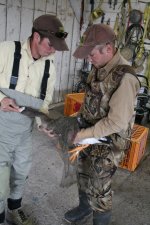
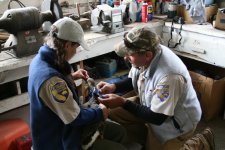
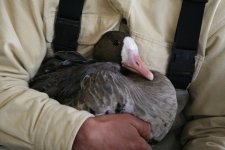
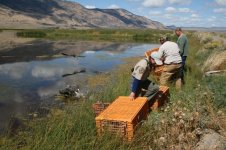
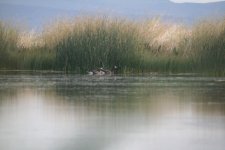
Like other Alaska nesting geese, tules make the transoceanic crossing from their interior Alaska breeding grounds and stage in September at Summer Lake Willdife Area in Eastern Oregon. Summer Lake is where the trapping and tagging portion of the study occurs. From Summer Lake, the birds continue to a portion of the California Central Valley where they spend the winter. Much has been learned from the study such as population estimates, breeding, brood rearing and molting areas, habitat preferences and migration patterns. The population is currently thought to be around 12,000 birds. The project is ongoing and a cooperative effort between USFWS, Oregon DFW, Caliornia DFW and Alaska Fish and Game.
All images below were taken at Summer Lake Wildlife Area.






